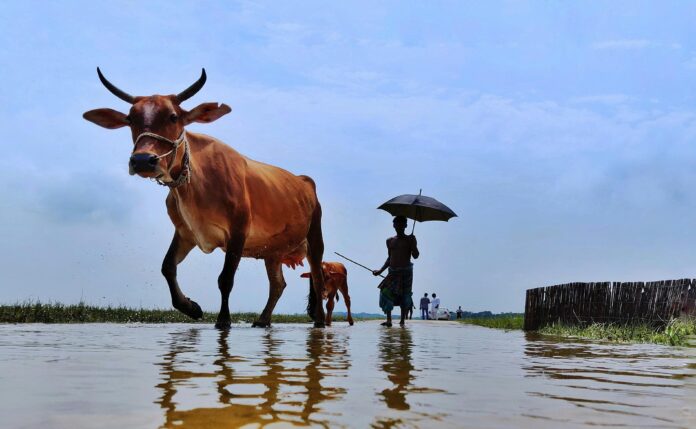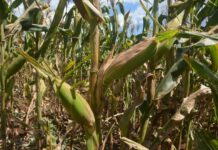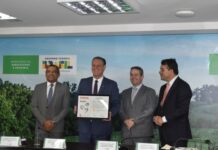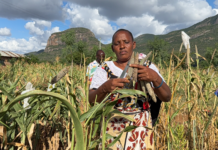Climate change is taking an increasingly extreme toll on African produce, as West and Central Africa experience torrential overnight rainfall. Prolonged periods of flooding and waterlogging pose serious risks to farmers relying on staple crops such as maize and wheat. Beyond the immediate damage caused by excess water, flooding also leaves a hazardous mix of chemical and microbial contaminants that compromise soil health and the safety of produce grown in affected fields.
The Double Threat of Chemical and Microbial Contaminants
Floodwater is often wrongly assumed to be excess rain, brown from dirt. In reality, it’s a carrier of pollutants from sewage, pesticides and liquid industrial waste that pollute the remaining 2.5% of freshwater on the Earth’s surface.
Research highlights heavy metals such as cadmium, lead, chromium, nickel and arsenic as the most studied toxicants in agricultural environments. These harmful substances can build up in crops over time and end up in people’s food, leading to neurological and digestive issues. Farms near factories or mining areas face a higher risk of contamination, as dirty water from these industries can seep into the soil or air.
Meanwhile, the most common leafy green contaminants are Escherichia coli (E. coli) and Salmonella — bacteria commonly found in animal waste and sewage. These microbes can cause severe gastrointestinal illnesses such as diarrhea and kidney failure when infected crops are consumed, even after basic washing.
Common crops like maize and groundnuts are at risk of double contamination. Although the Codex Alimentarius sets limits for harmful substances in food to protect consumers, these rules are not always enforced locally. With Africa focusing on exporting safe, high-value harvests, it’s possible that lower-quality, contaminated produce stays in local markets.
Exacerbating Agricultural Pollution
Floods intensify agricultural pollution. According to the UN Food and Agriculture Organization, agriculture is a leading cause and victim of water pollution worldwide. The industry accounts for 70% of consumption and releases large amounts of chemicals, organic waste, and contaminated runoff into rivers, lakes, and other water bodies. Floods can also sweep unused and uncovered fertilizers and pesticides into the fields.
In sub-Saharan Africa, chemicals are used to boost yields, heightening the risk of post-flood chemical overexposure. However, agrochemicals have become so prevalent that they have caused nutrient deficiencies in the soil, making 63% of arable land in Kenya more acidic than decades before.
Excess nitrogen and phosphorus from fertilizers can also create toxic algal blooms in irrigation water sources. For instance, the phytoplankton bloom near Madagascar was caused by nutrient-rich dust blowing from as far as Namibia and Botswana, carried over by the wind and deposited into the waters through rainfalls. Climate change can worsen these events, making them more common.
Diseases to Watch for in Flooded Crops
Floods weaken plant immunity and provide the perfect environment for several diseases to thrive. In maize — one of Africa’s most important staple crops — crazy top disease is triggered by 24 to 48 hours of standing water and leads to bushy ears and unproductive plants.
Heavy rains during flowering and early vegetative stages create conditions that favor some diseases, leading to root rot, leaf yellowing and eventual crop failure. Many of them survive in residue and can persist in the soil for multiple seasons, especially in fields with poor drainage.
Pathways of Contamination and Risks to Human Health
Heavy metals and harmful germs can enter produce in two main ways — direct absorption from contaminated soil and irrigation water and polluted air. The plant’s root system plays a part, with some vegetables taking in more than others. A particular concern is the potential toxicity of cadmium in Irish potatoes, which is a key food crop in Uganda, Tanzania and Rwanda.
People can get sick after eating contaminated produce, drinking unsafe water or breathing polluted air, particularly in farming areas close to factories. Vulnerable populations — including schoolchildren receiving government food programs, hospital patients and economically disadvantaged communities — face higher risks due to limited food choices and reliance on locally sourced staples.
The health effects can be severe. For example, eating fish with too much mercury has been linked to hearing and speech difficulties and nerve loss. Meanwhile, too much copper can upset the stomach. When chemicals and pathogens mix in the body, they can cause long-term sicknesses that are hard to treat.
Impact on Residential, Community, and School Gardens
Community and school gardens are becoming more popular across Africa for improving nutrition and local food security. However, these gardens are particularly vulnerable to flood contamination. Because they are often located in low-lying areas or near drainage systems, they are more likely to accumulate runoff that contains pathogens and chemicals.
Popular vegetables in such gardens include lettuce, spinach, amaranth and tomatoes. Due to their leafy structures and tendencies to retain moisture, these vegetables are especially prone to microbial contamination. Contaminated produce from these gardens can directly introduce Salmonella and E. coli into homes and school kitchens.
Managing the Impact of Floodwater Contaminants
To reduce the threat of chemical and microbial contamination in produce, farmers can implement a multi-layered strategy that includes:
- Raised beds and contour farming: Building elevated planting areas helps reduce waterlogging and contamination from ground-level pollutants.
- Buffer zones: Plant grasses or shrubs around fields to trap sediment and pollutants before they enter cropland. Phytoremediation crops — including sunflowers, Indian mustard, and poplar trees — absorb heavy metals and can help rehabilitate contaminated soils.
- Soil testing: After flooding, testing soil for pathogens and heavy metals can inform safe replanting times and help decide whether soil remediation is necessary. Farmers should avoid harvesting crops submerged in floodwater unless it tests safe.
- Solar-powered water treatment: Renewable energy sources such as solar can power UV purification systems or low-cost filtration for irrigation water in off-grid areas.
- AI-based smart irrigation: Using artificial intelligence, soil sensors and weather forecasts, farmers can optimize water use post-flood and prevent overwatering — a known contributor to disease spread. These systems detect moisture levels and irrigate only when necessary.
Additionally, bioremediation techniques show cost-effective and eco-friendly solutions for mitigating heavy metal pollutants in Sub-Saharan soil. Farmers must avoid planting staple crops in highly industrialized or polluted zones.
Turning Flood Risk to Food Resilience
Flooded fields aren’t a temporary nuisance but a significant threat to Africa’s harvests, people and ecosystems. As chemical and microbial contaminants infiltrate soils and water systems, it becomes crucial for farmers to adapt through sustainable practices and modern technologies. Empowering farmers with knowledge and access to soil testing and adopting safer agricultural practices is vital to protecting staple crops and consumers. With proactive action and the right tools, they can rise above the floodwaters and build resilience in a changing climate.









